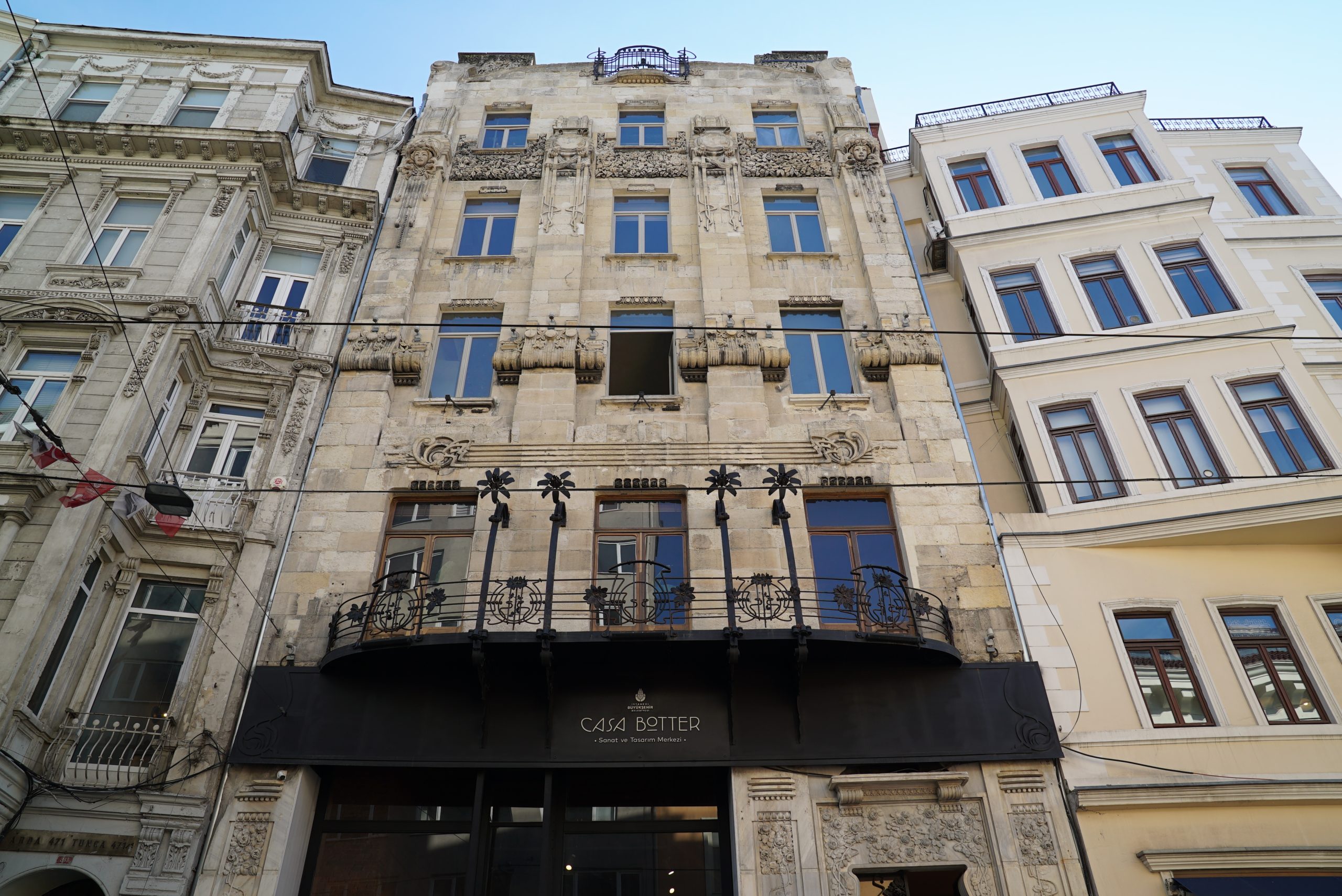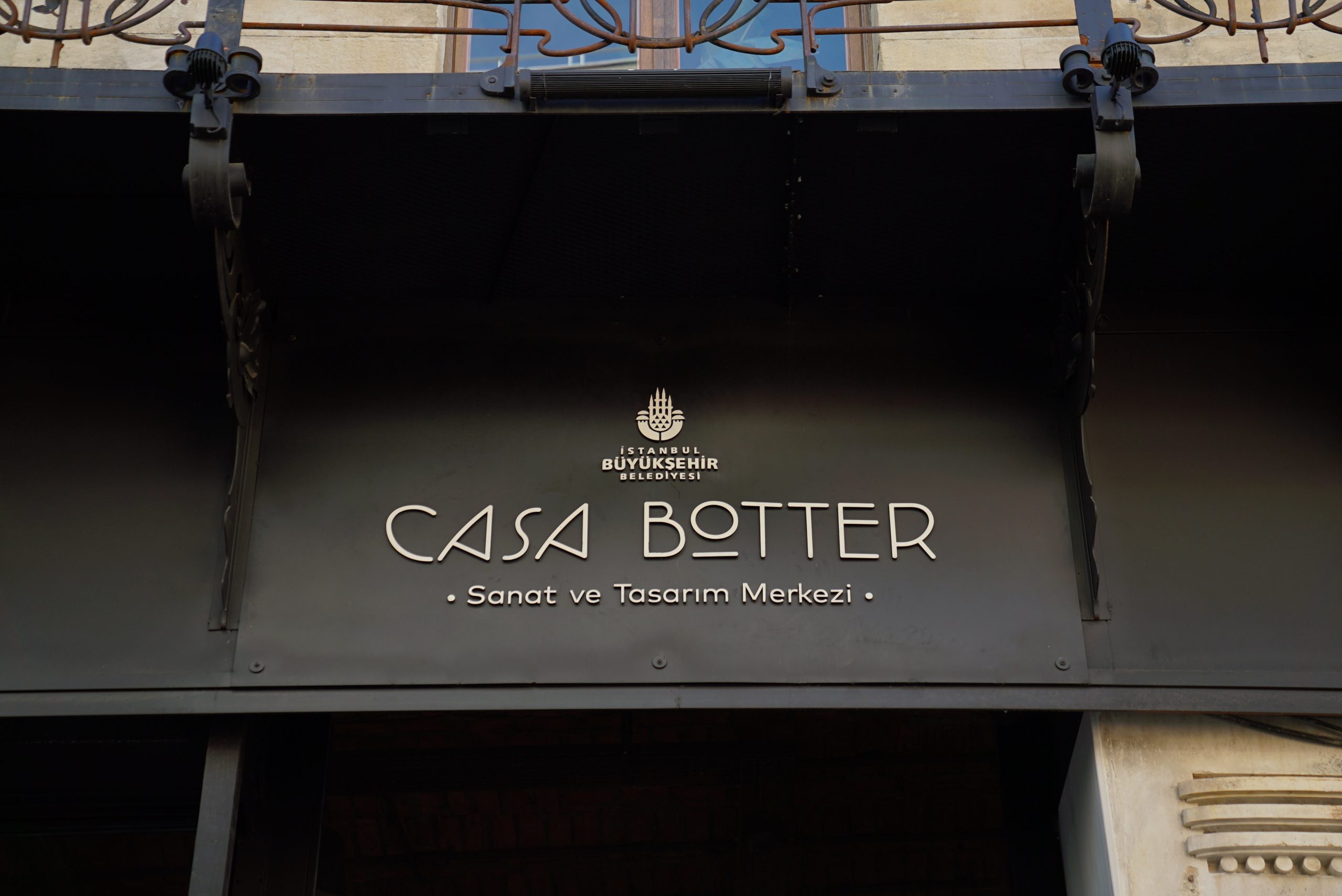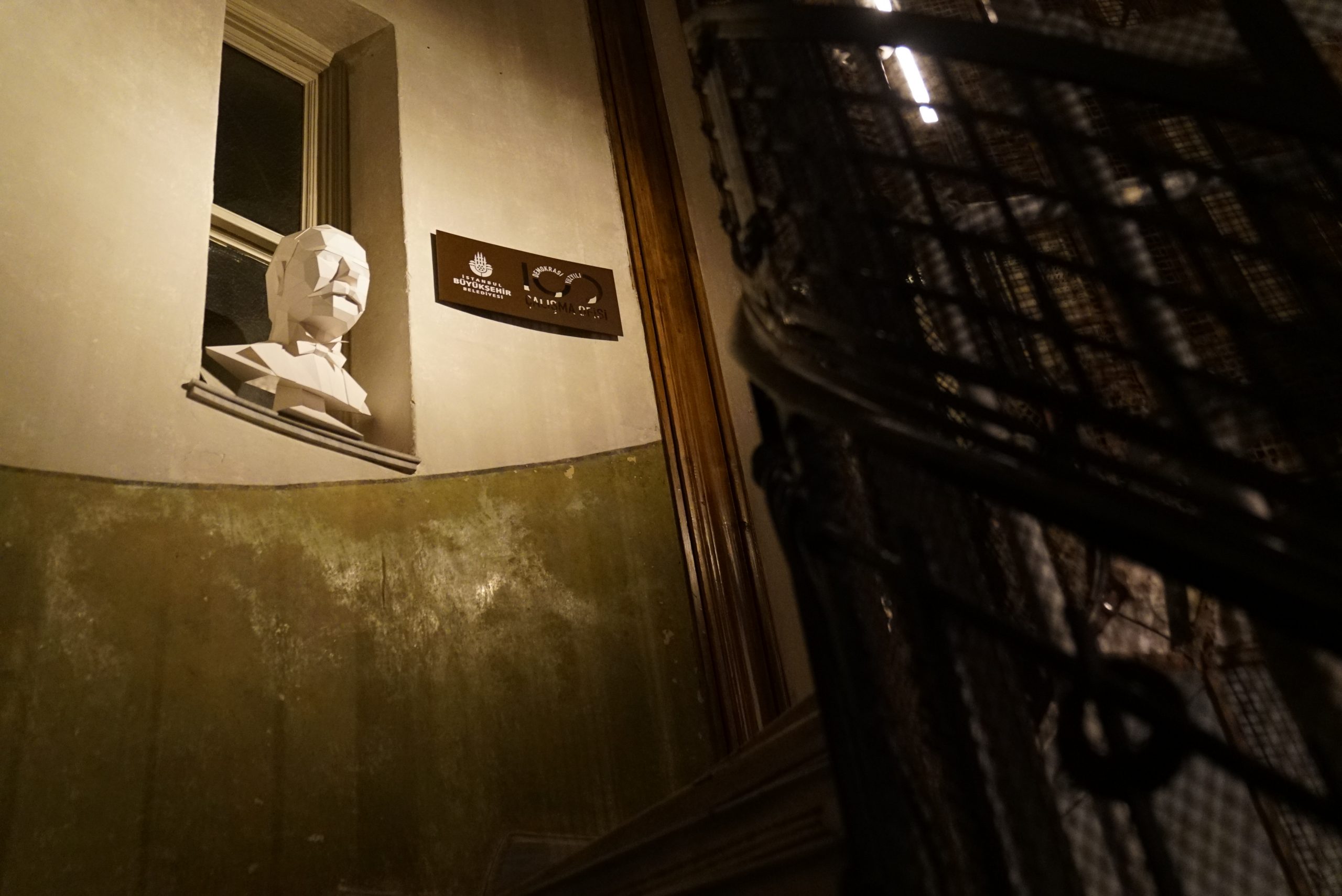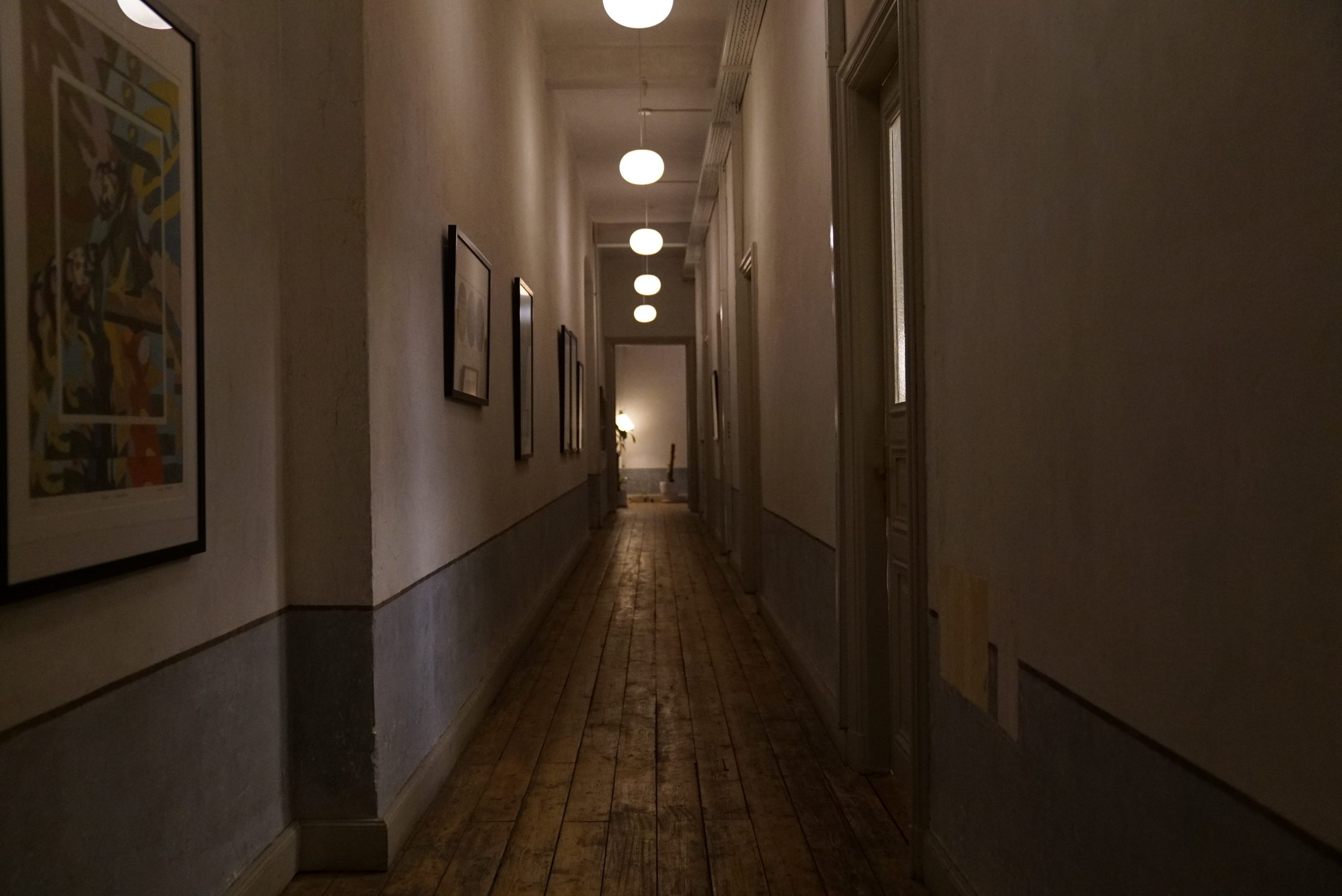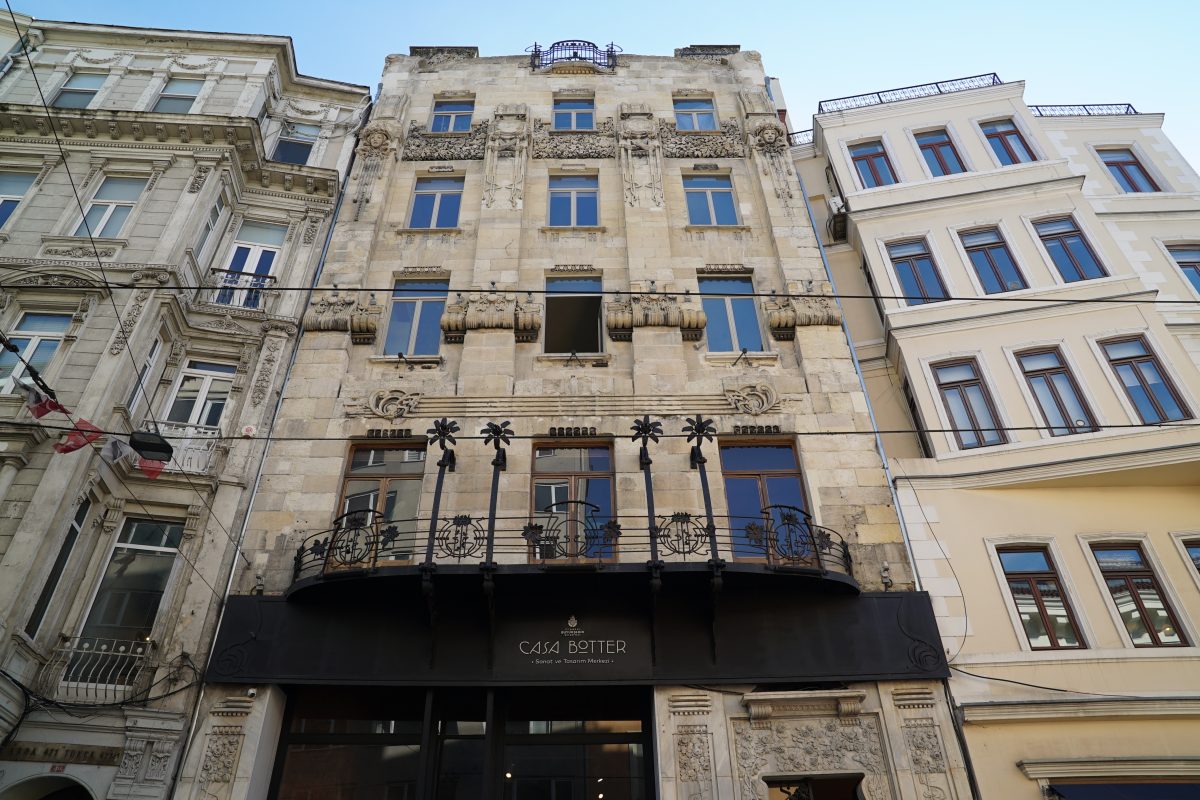Nestled in Taksim, the pulsating heart of Istanbul, Casa Botter stands as a genuine gem for young enthusiasts of history, myself included. I believe that this building is among the most invaluable treasures within the vibrant tapestry of Taksim.
The older generation reminisces about the allure of İstiklal Street, expressing concerns about its current state while holding onto hope for the restoration of its historical buildings. To instill optimism and share in this anticipation, I decide to accompany my parents to Casa Botter, a place I’ve longed to explore.
Navigating through the usual hustle and bustle of İstiklal Street, the crowd gradually subsides as we approach Tünel Square. As I draw closer to the Casa Botter building, I realize how frequently I’ve passed by it. A sense of anticipation fills me as I notice a beautiful canvas design hanging in front, hinting at the promise of future restoration. The canvas’s exquisite design sparks my curiosity about the actual beauty that lies beneath, leaving me eager to witness the restored Casa Botter.
Diving Deep
Constructed in 1900 by the Ottoman Emperor Abdülhamid II for the official tailor and couturier of the palace, the Dutchman Jean Botter, this apartment building bears historical significance. Renowned architect Raimondo D’Aronco designed the structure, which was completed in 1901. Notably, it marked Istanbul’s first foray into Art Nouveau architecture and served as the city’s inaugural fashion house.
The ground floor housed the fashion house, the first floor accommodated the studio, while subsequent floors were residential. The showcase on the street side of Botter Fashion House displayed the era’s most sought-after haute couture samples. However, as time passed, the building faced neglect and abandonment, transforming it into a haunting relic of its former glory.
Influence of the Art Nouveau Movement
Prior to my exploration, I had limited knowledge of Art Nouveau architecture. However, as I delved into readings and visuals, it dawned on me that this movement transcends mere architectural style; it is a profound expression. Art Nouveau is a transformative force that liberates itself from conventional designs, embracing nature, curves, and intricate embellishments. This realization becomes vivid while strolling around Casa Botter, where every balcony railing and window frame exude the essence of the movement. It’s almost as if the building is a living entity, poised to share its narrative at any given moment.
A New Identity
Last year, as spring graced the city, the building underwent a revival and emerged as the Casa Botter Art and Design Centre. Stepping into this artful masterpiece for the first time, I felt transported to the pages of a 19th-century novel.
With seven floors adorned with lofty ceilings, the building has gracefully retained its beauty over the passage of time. Each floor unfolds into diverse activity areas, showcasing various art disciplines. The rejuvenated spaces now include an exhibition hall, a screening center, the Istanbul Documentary Film Archive, an information and documentation center, a conference hall, a design workshop, and an open space design office.
The first floor serves as an expansive exhibition area, characterized by brick walls and platforms for displaying artworks. The vibrant stained-glass windows, unique to older houses, not only adorn almost an entire wall but also hint at the coexistence of working and living spaces.
Ascending to the second floor, we are welcomed by paper models of Botta and d’Aronco along the way. This floor hosts an array of artworks, libraries, and study spaces. The balcony, visible from the outside and offering a captivating view of İstiklal Street, has become a favorite spot for both capturing memorable photos and being photographed – an ideal setting for such moments. 🙂
Feeling
Reflecting on Casa Botter being the inaugural fashion house in Istanbul, I find myself contemplating the nuanced character embedded in its details. Roaming between the floors, I envision an era where fashion enthusiasts engaged in conversations about the latest European trends. The building’s roots in the Ottoman Empire evoke a striking blend of tradition and modernity, serving as a poignant reminder that history is more than dates and events; it’s a tapestry woven with stories and lives that endure, shaping our present.
Following my initial visit, it becomes evident that Casa Botter transcends its role as a mere architectural marvel; it emerges as a symbol of resilience. Despite the ebb and flow of time and the city’s modernization, the building proudly stands, offering a testament to Istanbul’s rich cultural heritage. For someone perpetually intrigued by the interplay of cultures and ideas, Casa Botter has become a wellspring of inspiration, sparking curiosity and appreciation for the enduring connections between past and present.
